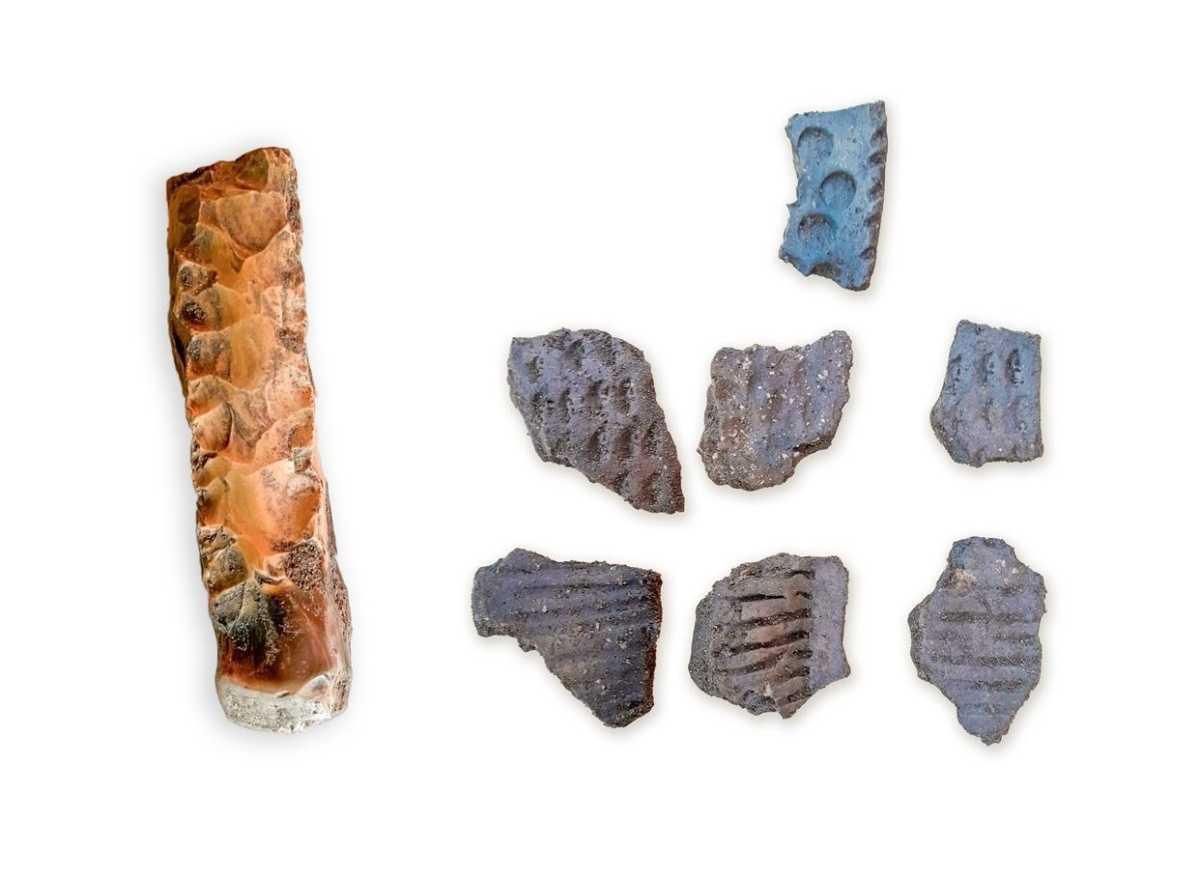Archaeologists from the Swedish State Museums of History have recently uncovered a ceremonial enclosure from the Neolithic period, located in Skåne, Sweden.
Initial excavations found wetland deposits and a dry-stone wall, which contained a large collection of Neolithic artefacts, including Funnelbeaker ceramics, wood, crafted flint, and animal bones.
The Funnelbeaker Culture (4300–2800 BC), is named for its characteristic ceramics, beakers and amphorae with funnel-shaped tops. The culture developed as a technological merger of local Neolithic and Mesolithic techno-complexes between the lower Elbe and middle Vistula rivers.
Star finds at the site also include an antler billet used for knapping flint, a fishing hook, and a leatherworking stylus, which have been well preserved due to the environmental conditions of the soil.
According to the archaeologists, finding preserved horn and bone objects from this era are extremely rare, more so in the wider context of Funnelbeaker Culture sites in Sweden.
Nearby, the researchers also unearthed a causewayed enclosure from the same period, consisting of rows of elongated pits up to 1.5 metres deep, arranged in a semicircle on a raised ridge. Some of the pits are lined with stones, while others contained Funnelbeaker pottery deposits.
"These are unique for the Neolithic period in this country. We have discovered a ceremonial complex where people gathered at certain times during the year to celebrate religious festivals. The finds suggest feasts with ritual butchering and deposition of offerings both in the wetland and in the open pits of the enclosure", says Magnus Artursson.
In the Funnelbeaker Culture, people primarily lived as farmers, cultivating a variety of crops and raising animals such as sheep, goats, pigs, and cattle. They supplemented their diet by hunting and fishing, and buried their dead in passage graves or dolmens.
"The first farmers came to Scandinavia around 4,000 BC. We have two passage graves just a few miles away from the same period, so they are probably linked," added Artursson.
Header Image Credit : Arkeologerna
Sources : Arkeologerna



